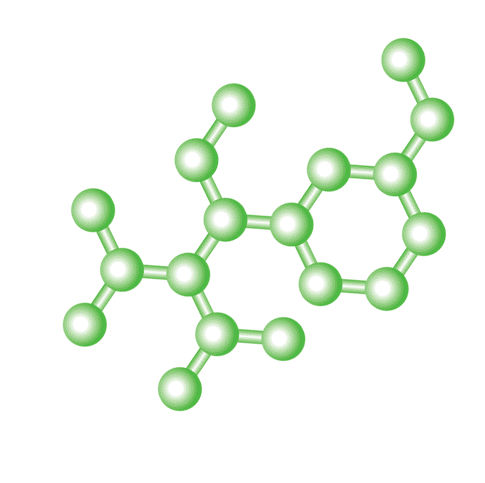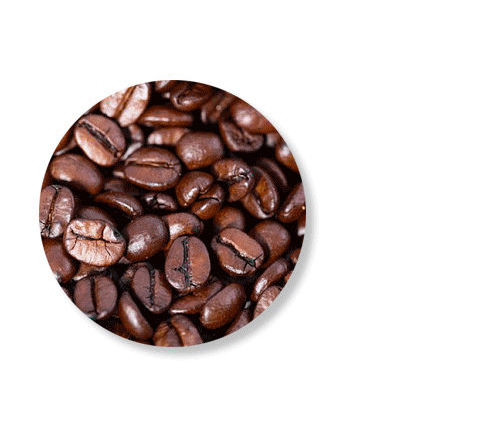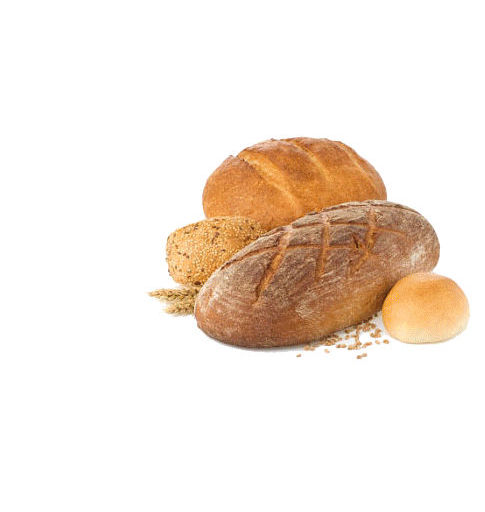HIGHLIGHTS: Recent Publications in the Field of Natural Polymers

Daniel Some, Ph.D. - December 15, 2015
Natural polymers and their derivatives feature in a host of cutting-edge applied research projects, including biofuels, environmentally friendly structural materials, nanopharmaceuticals and food science. Light scattering is, of course, a primary means for characterizing natural polymers in terms of molar mass, size, and conformation. Here we present some highlights of recent publications utilizing MALS to study polymerization, structure and degradation of natural polymers, and even the contribution of these materials to the texture and consistency of one of our favorite mobile phases: beer.
Cellulose is of great interest as a raw material thanks to its great abundance, in particular in waste products of agriculture and paper industries as well as in recycled materials. Several publications in the past year have used MALS and DLS to study cellulose:
-
Dialdecellulose (DAC) is a promising cellulosic derivative that can be converted into forms with rich chemistry and properties. Sulaeva et al. (Determination of molar mass distributions of highly oxidized dialdehyde cellulose by size exclusion chromatography and asymmetric flow field-flow fractionation, Cellulose 2015) utilized a DAWN MALS detector and Eclipse FFF system to study the degradation of cellulose upon DAC production under a variety of conditions, and at the same time evaluated the pros and cons of SEC-MALS and FFF-MALS for the different conditions. A DynaPro NanoStar dynamic light scattering (DLS) detector was used both on- and off-line to determine aggregation states of DAC. Prolonged heating of DAC in different solvents led to severe degradation, as evidenced in the changes in molecular weight distributions which in some cases indicated aggregation, and in others depolymerization. SEC was quite sensitive to mobile phase due to changes in polymer chain conformation as indicated by conformation plots. FFF exhibited better separation efficiency even though it did require more effort. Batch DLS showed the formation and dissolution of microcrystalline DAC.
-
Palme et al. (Chemical and ultrastructural changes in cotton cellulose induced by laundering and textile use, Cellulose 2015) utilized SEC-MALS as well as intrinsic viscosity, NMR and other methods to follow the structural changes in cotton cellulose due to "wash and wear" in order to understand whether used textiles are suitable for recycling. An approximately 10-fold reduction in mass-average and number-average molar masses as well as an increase in polydispersity were observed over the course of > 50 laundry cycles, bringing the used material into a range suitable for the production of another textile, viscose.
-
Kes and Christensen (Degradation of cellulosic insulation in power transformers: a SEC-MALLS study of artificially aged transformer papers, Cellulose, 2015) studied the aging of paper used as insulation in electrical power transformers. Aging was accelerated by exposure to high temperature. SEC-MALS showed a strong tendency of cellulose degradation to cause a shift to lower molecular weights, with degradation kinetics analyzed by periodically extracting and running aliquots.
Inulin, a fructan found as dietary fiber in garlic, leek, banana, and Jerusalem artichoke, is particularly abundant in chicory root and ryegrass. Inulin is used in food technology thanks to its ability to form gels and fiber, but it also finds applications as an encapsulant for pharmaceutical ingredients and in other drug-delivery modalities, and is even said to help prevent a range of illnesses on its own. Inulin is highly polydisperse and covers nearly three decades in molar mass from just a few hundred g/mol up to tens of thousands, making characterization with a single technique difficult. Evans et al. (Determination of the degree of polymerisation of fructans from ryegrass and chicory using MALDI-TOF Mass Spectrometry and Gel Permeation Chromatography coupled to multiangle laser light scattering, Food Hydrocolloids 2015) found that MALDI-TOF Mass Spec and SEC-MALS complement each other nicely to provide a complete and accurate molar mass distribution, wherein MS is more adept at the very high resolution analysis of small oligomers while MALS extends coverage beyond that possible by MS for these macromolecules.
Sometimes, a natural polymer is not completely natural. Nelson et al. (Free Radical Polymerization of Caffeine-Containing Methacrylate Monomers, J. Poly. Sci. 2015) constructed copolymers from 2-ethylhexyl methacrylate and caffeine methacrylate in order to harness some of the benefits of the complexity found in naturally occurring polymers. SEC-MALS determined that polymerization occurred up to molecular weights of 40,000 g/mol. The resultant material offered improved mechanical storage and melt moduli. We expect that drinking cups made of this novel copolymer will just need a fill with hot water to give that morning jolt!
High molecular weight polysaccharides (HMWP), ranging into the tens of millions of g/mol, have many applications in food, paper, paint, pharmaceuticals, oil recovery and mineral processing. While it is natural to consider characterizing polysaccharides via SEC-MALS, there is always the concern that such large and fragile biomacromolecules may degrade due to shear on the SEC column.
-
Pitkänen and Striegel (Polysaccharide characterization by hollow-fiber flow field-flow fractionation with on-line multi-angle static light scattering and differential refractometry, J. Chromatogr. A, 2015) found that MALS coupled to hollow-fiber field-flow fractionation (HF5) exhibits a more accurate representation of HMWP molar mass distributions than SEC-MALS. The analysis was further borne out by comparison with off-line DLS. The authors expect even more substantial benefits from HF5-MALS for ultra-high-molecular weight polysaccharides.
- Wang and Wang (Molecular Weight Characterization of High Molecular Weight Dextran with Multiangle Light Scattering in On-Line and Off-Line Mode, Biopolymers, 2015) employed SEC-MALS and CG-MALS to assess shear degradation by comparing the weight-average molecular weights obtained from each method. A DAWN light scattering detector was used along with an Optilab dRI detector and a Calypso II composition-gradient system to robustly and repeatedly measure Zimm plots of HMWP. While smaller polysaccharide samples with weight-average molar masses of ~ 2 MDa did not exhibit change in average Mw, HMWP samples with average values of ~ 90 MDa (as determined by CG-MALS) appeared to have lost a great deal of material and/or degraded upon passing through the SEC column. The results were partially flow-rate dependent, implying shear contributed to the degradation. Hence CG-MALS can serve as an important sanity check on SEC-MALS measurements, and perform reliable average molar mass determination when SEC-MALS is not suitable.
Lager or porter, which to choose? When in doubt, try analyzing your beer options by FFF-MALS as was done by Tügel et al. (Analysis of polysaccharide and proteinaceous macromolecules in beer using asymmetrical flow field-flow fractionation, J. Inst. Brew., 2015). Beer is a highly complex mixture of macromolecules including amino acids, polypeptides, proteins and polysaccharides, derived via enzymatic degradation of the cytoplasm and cell walls of barley and other cereals. That satisfying foam is a result of the beer's proteins, while β-glucans contribute to viscosity and turbidity. Since the molar masses of these ingredients range from hundreds of g/mol, to hundreds of thousands, a technique is needed which can simultaneously separate and characterize a wide range of macromolecules. An Eclipse FFF system coupled to UV, DAWN MALS and Optilab RI detectors clearly distinguished the macromolecular profiles of various types of lager and porter as well as their foam, indicating the distinct raw materials and processing conditions, and ultimately helping the authors choose their brew via reasoned scientific analysis. Or, perhaps in the end, they just used old-fashioned taste-testing!
This is just a sampling of the many peer-reviewed articles utilizing Wyatt instruments for characterizing natural polymers that may be found by searching our online Bibliography. If your publication citing Wyatt instruments (to characterize natural polysaccharides or otherwise) has not yet been included in the Bibliography, please let us know! Send a preprint to publication@wyatt.com, and we"ll reward you with a Wyatt mug or tee shirt!






